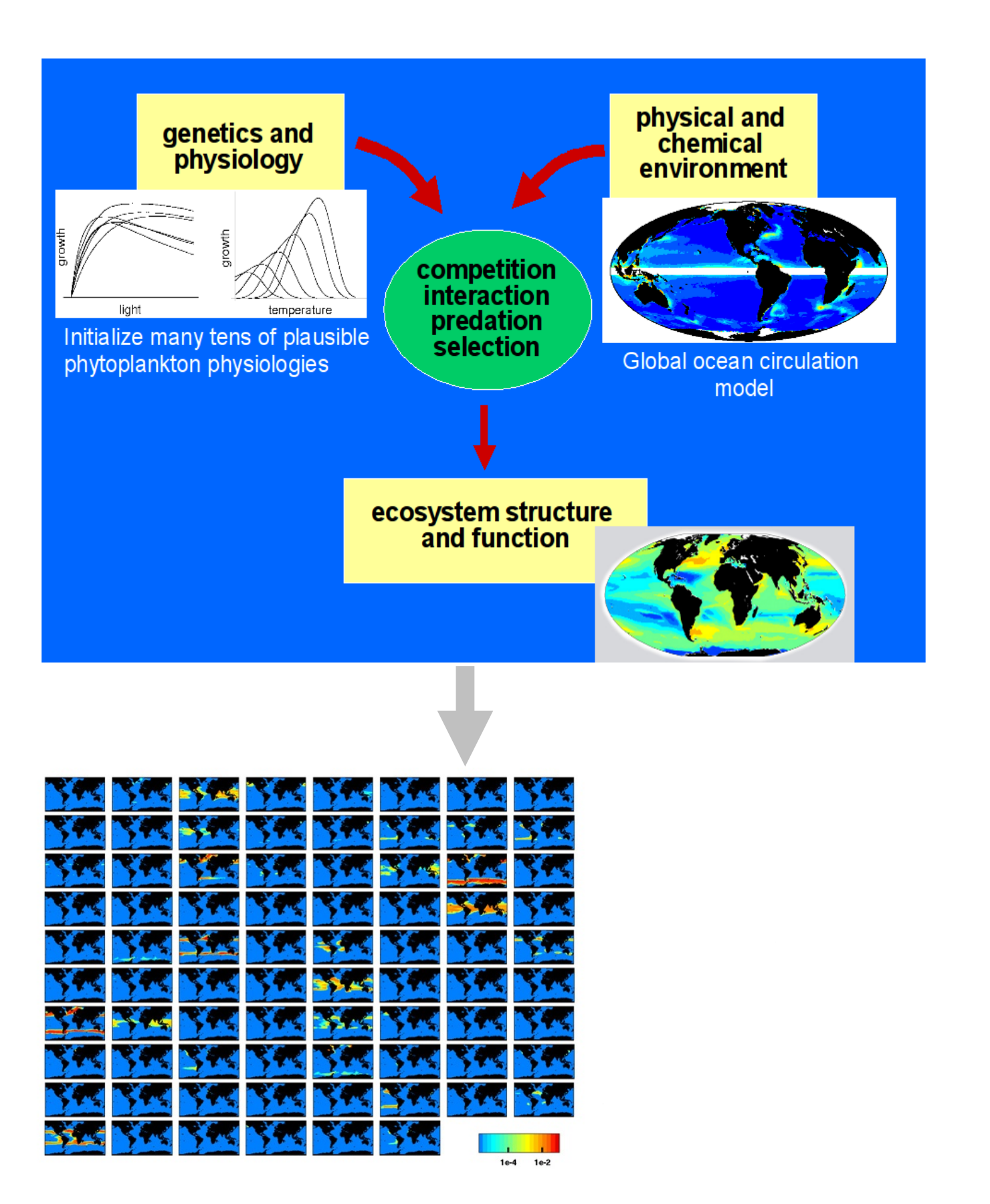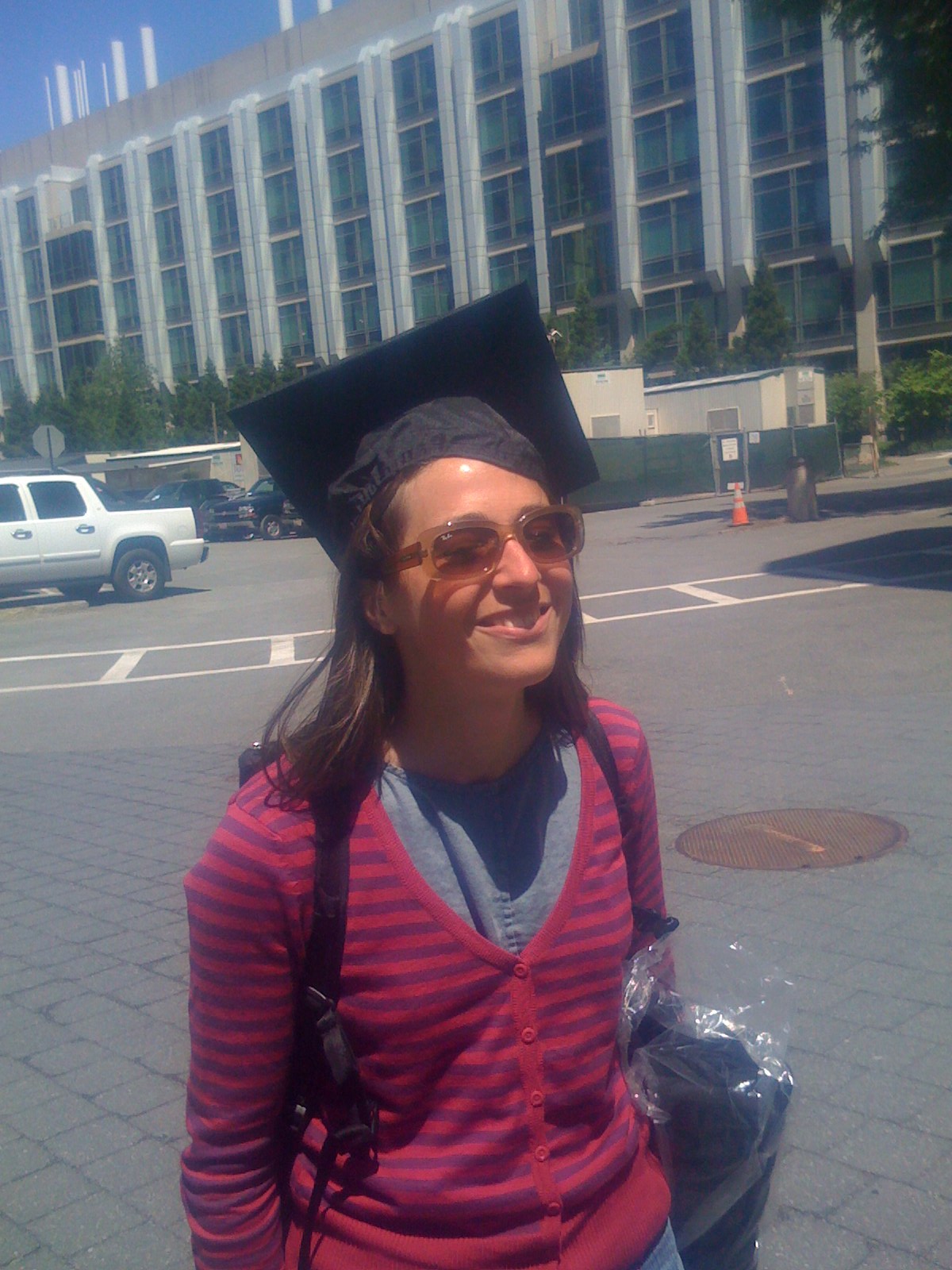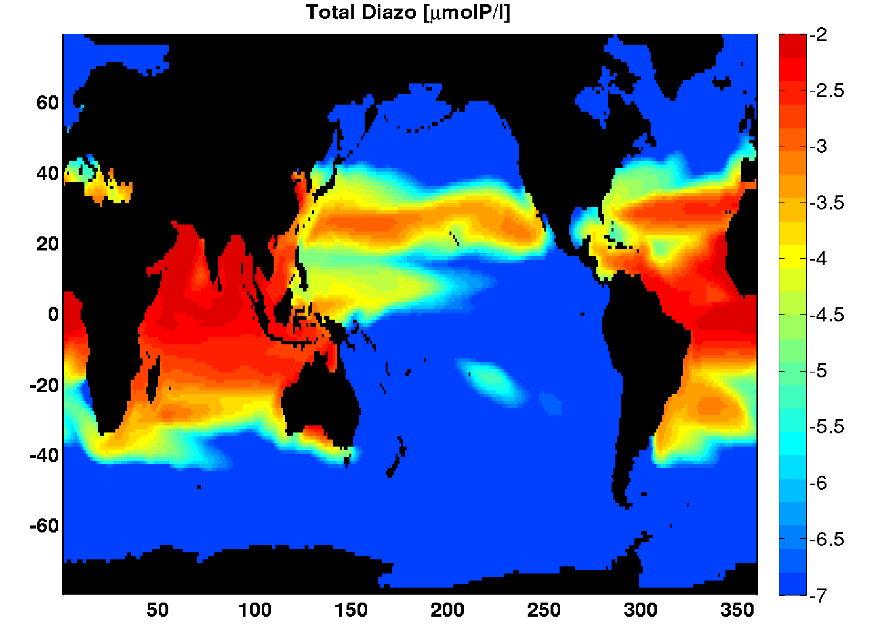Population Competition in Action
story by Helen HillAs the Darwin project begins to bear fruit we focus here on the work of recent doctoral graduate Fanny Monteiro who together with Mick Follows and Stephanie Dutkiewicz have been using the MITgcm to probe the behaviour of self-assembling phytoplankton communities within a global ocean circulation (Follows et al. 2007). Figure 1 summarises the core ideas behind the teams work: Within this, many tens of phytoplankton “types” are initialized, each one having a randomly assigned sensitivity to light, temperature and nutrient requirements. In Fanny’s work, she additionally initialised this model with populations of “diazotrophs” – organisms that can fix their own nitrogen, but with the trade-off of correspondingly slow growth and high iron to phosphorus requirements.

Figure 1. Illustration of the key components in the self-assembling phytoplankton community model. After some years of interaction, the fittest “types” persist and occupy distinct habitats.
The work uses a global integration of such a self-assembling ecosystem model to provide a simulation unique in its resolution of both fine scale ocean features and phytoplankton species. The physical set up is that of ECCO-GODAE, with a horizontal resolution of 1° by 1° with 23 vertical levels. Within this, many tens of phytoplankton “types” are initialized, each one having a randomly assigned sensitivity to light, temperature and nutrient concentration as well as physiological functionality constrained by allowing nitrogen fixation but with the trade-off of correspondingly slow growth and high iron to phosphorus.
What emerges (fig. 2) is a diverse population of diazotroph analogues congregating in plausible abundances and habitats, accurately characterized by Resource Competition Theory (Tilman 1977, 1982). The three most abundant types to emerge also reflect the observed diversity of nitrogen fixers in the observed ocean – confirming that diazotrophy can be a successful strategy associated with a variety of other physiological characteristics.

Figure 3. Distribution of modeled Trichodesmium analog biomass compared with observations (top panel), the same but for unicellular analogs (middle) and Diatom-Diazotroph Association analogs (bottom). (Published observations converted to estimated phosphorus biomass).
Figure 3 compares distributions for the three most abundant analogue diazotrophs to the three diazotroph types observed to predominate in the global ocean (Trichodesmium, unicellular diazotrophs and diatom-diazotroph associations) again supporting the plausibility of the emergent distributions.
Want to learn more? Contact Fanny.

Fanny, seen here collecting her robes for commencement, has been an MITgcm user since 2005. We wish her well as she leaves to take up a post-doc position in the UK.
Publications associated with this work:
References:
Follows, M.J., S. Dutkiewicz, S. Grant, and S.W. Chisholm, 2007:
Emergent biogeography of microbial communities in a model ocean.
Science, 315, 1843-1846, doi:10.1126/science.1138544.
Tilman, D. Ecology 58, 338−348 (1977).
Tilman, D. Resource Competition and Community Structure (Princeton University Press, 1982).

